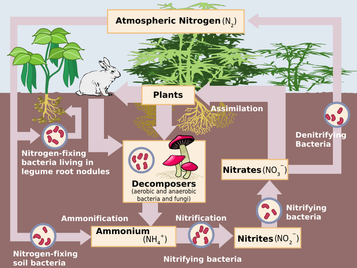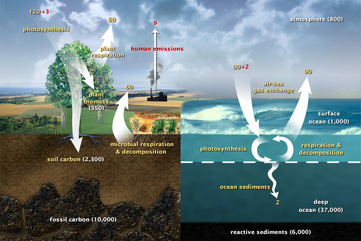The Biogeochemical Cycles of the Deserts
The Nitrogen Cycle

The nitrogen cycle in a desert begins with the uptake of nitrates by death valley plants. These are then consumed by insects and reptiles. These creatures are eaten by secondary consumers such as small carnivores and snakes. Then the nitrogen-bearing compounds in these animals are passed further up the food chain to larger carnivores such as coyotes and birds of prey. These creatures are the tertiary level of the desert food pyramid. Their waste products and dead bodies return nitrogen back into the soil, where bacteria and fungi break them down for plant growth.
The Carbon Cycle

The carbon cycle in Death Valley is a continuous process that involves the desert plants absorbing carbon dioxide together with sunlight and water in the process called photosynthesis to make food and carbon rich compounds. When plants die, they decompose and release the carbon elements into the soil as nutrients. Then they carbon elements are absorbed by other plants. Death Valley animals also partake of these plants, breathe out carbon dioxide and decompose upon death and the cycle continues.
